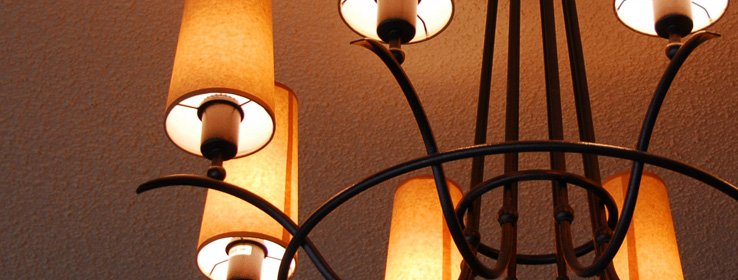What do changing energy requirements for light bulbs mean for interior design?
You've probably heard that a recent U.S. energy bill will outlaw incandescent light bulbs and require the use of compact fluorescent lamps (CFLs). Your clients may begin asking about how this will affect them. Here's a quick summation of the bill, its scope and timeline, and how the new generation of light bulbs will affect color quality in interior design.
Background
, which was signed by President Bush, seeks to reduce the energy use of light bulbs by 30 percent from 2012 to 2014. Beginning in 2012, the sale of bulbs that use more energy will be phased out, beginning with 100-watt bulbs. The ultimate goal of the phase-out is to require all light bulbs to be 70 percent more efficient by 2020.
According to the U.S. government's
ENERGY STAR®Web site, the bill's requirements are "technology-neutral," which means technically it's misleading to say that all incandescent bulbs will be phased out and replaced with CFLs. If incandescent bulbs are re-engineered to meet the new standards, they could still be an option. Other types of bulbs, such as halogen lights and light-emitting diodes (LEDs), meet the new requirements and will also be viable alternatives to CFLs.
In addition, many variations of incandescent bulbs will be exempt from the new regulations, such as three-way, candelabra, colored and other specialty bulbs.
It's also important to note that the bill regulates the sale of new bulbs, not the use of existing ones. So if a client has a stockpile of 100-watt incandescent bulbs, for instance, he or she is legally entitled to use them before purchasing new ones that comply with the regulations.
Practical application
So, if you or your clients want to start complying with the rules now, what currently available bulbs should you choose? Each bulb has its pros and cons and different effects on color in interior design.
These bulbs are growing in popularity and are the best bargain in terms of eco-friendly bang for the buck. Prices have dropped in recent years, so their cost is relatively comparable to traditional incandescent bulbs. Their life span is eight to 15 times that of incandescents and they use 75 percent less power to produce the same light.
Because the word "fluorescent" appears in the name, many consumers fear that these bulbs will emit the cool glare of older fluorescent bulbs, which tended to diminish warm colors such as red and yellow. But you can buy CFLs that give off "warmer" light; the trick is to pay attention to the Kelvin (K) numbers on the package. The lower the number, the warmer and more yellow the light; higher Kelvin numbers give off cooler light. To closely match the warmth of traditional incandescent bulbs, buy CFLs in the 2700K to 3000K range. Full-spectrum CFLs, which are typically 5000K, are said to mimic natural sunlight better than incandescents.
You've no doubt heard the warning that there is a small amount of mercury in CFL bulbs, but it bears repeating. Handle them carefully, dispose of them properly, and if one breaks be sure to follow all recommended safety precautions.
Many believe that LEDs are the true future of light bulbs. Once used almost exclusively in electronic devices, LEDs are now making their way to design showrooms and causing a huge buzz at trade shows. They use 90 percent less energy than incandescents and last 10 times longer than CFLs. Because of the method used to produce light, they give off no heat whatsoever. And because LED lighting is available in different color temperatures, it works well for interior design.
The biggest challenge for LED manufacturers has been producing bulbs whose brightness rivals that of incandescents and CFLs. LEDs currently available don't emit light in all directions as well as the other two options, so they're better for directional lighting, but the technology continues to improve by leaps and bounds.
The biggest deterrent to purchasing LEDs is their price: A single bulb, equivalent to a 40-watt incandescent, can cost $20 or more. However, considering their incredible life span, LEDs may be a good investment in the long run.
More energy-efficient than traditional incandescents but less so than CFLs, halogen bulbs - a type of incandescent - may be a good solution if you want a longer-lasting, eco-friendly bulb, but are concerned about the mercury content or the bulb shape of CFLs. They last three to four times longer than incandescents, are 30 percent more efficient and are available in similar shapes. Also, some halogen bulbs work with a dimmer switch.
While they probably won't meet long-term future energy-efficiency standards in their current form, halogens could be useful while you or your clients wait for LED technology to improve.
For information on choosing the right eco-friendly bulb for your interior, go to the
ENERGY STAR site.







